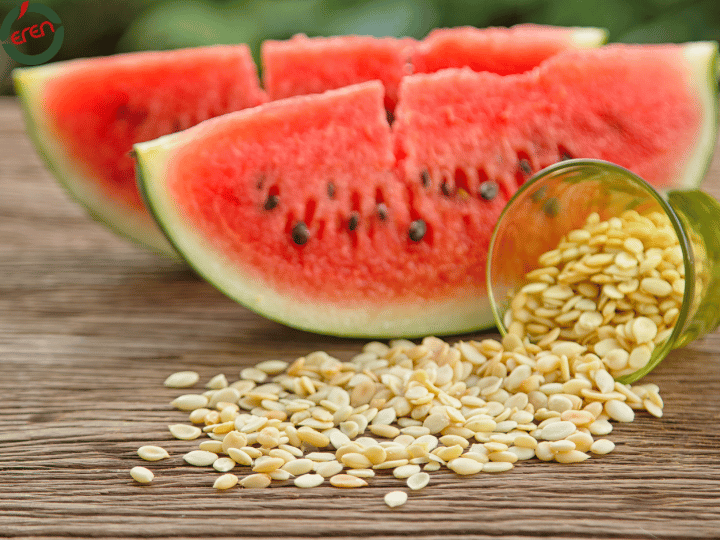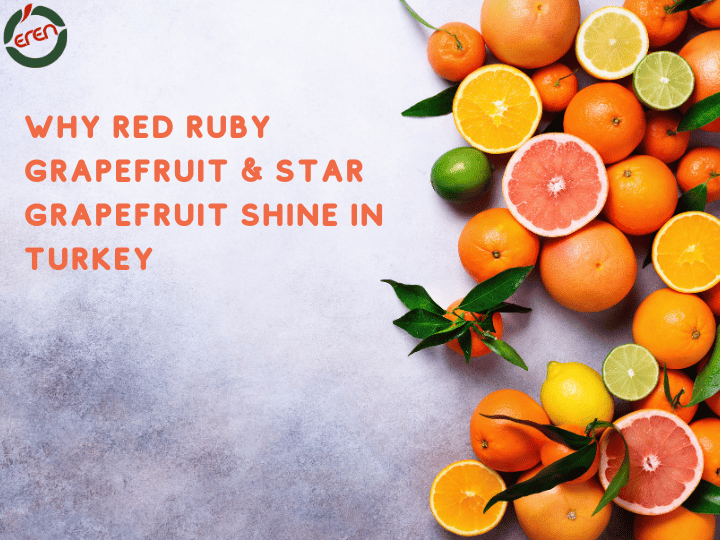From Seed to Table: The Global Impact of Watermelon Production
Step into the vibrant world of watermelon products. Historically, watermelon seeds have been cherished for their nutritional value and versatile uses, such as roasting and oil extraction. European settlers played a pivotal role in introducing watermelons to the New World. The modern varieties of watermelon, achieved through selective breeding, are now sweeter, easier to consume, and often seedless. This fruit, known for its juicy, red flesh and refreshing taste, is a hallmark of summer gatherings. Watermelons have evolved from a seasonal treat to a cultural icon and a significant global commodity.
The Global Popularity of Seedless Watermelons: A Brief Overview
Watermelons are celebrated worldwide and enjoyed in various forms—from fresh slices to juices, salads, and even pickled rinds. Their hydrating properties and versatility make them a favorite across many cultures, uniting people through their universal appeal. The rise of products made from watermelon highlights the fruit's versatility in culinary uses.

The Origin and History of Modern Watermelon
Tracing the Roots: The Ancient Beginnings of Watermelons
The journey of watermelons begins in the arid deserts of Africa over 5,000 years ago. Early cultivators prized the fruit not only for its sweet taste but also for its ability to provide hydration in harsh climates, valuing both the edible seeds and flesh. Archaeological findings indicate that watermelons were a significant part of the ancient Egyptian diet, frequently illustrated in their hieroglyphics and included in tombs as nourishment for the afterlife.
Watermelons with Sweet Yellow Flesh in Ancient Cultures: From Africa to Asia
As trade routes expanded, so did the cultivation of watermelons. By the 7th century, they had spread to India and China, quickly becoming integral to local diets. The adaptability of watermelons led to the development of early ripening varieties suited to different climates. In China, the popularity of watermelons soared, leading to the creation of new varieties. The fruit eventually reached Europe via Moorish Spain in the 10th century, where it continued to gain favor.
The Spread Across Continents: How Watermelons Conquered the World
Watermelons crossed the Atlantic with European explorers and African slaves, thriving in the warm climates of the Southern United States and Caribbean islands. Today, watermelons are grown in over 100 countries, each adding unique twists to this beloved fruit. As a result, the global watermelon production operation has grown immensely, catering to diverse tastes and preferences.

Varieties of Watermelons
The Expansion Across Continents: How Watermelons Spread Globally
Watermelons come in a delightful array of varieties, from the classic Crimson Sweet to the petite Sugar Baby. They can be round or oblong, with flesh ranging from deep red to yellow or orange. Each type offers a distinct flavor profile, ensuring a watermelon for every preference. Understanding how many watermelons does one plant produce can vary based on the type and cultivation practices.
Seeded vs. Seedless: The Great Debate
Seeded watermelons, characterized by their shiny black seeds, bring back nostalgic memories for many people. However, seedless varieties, developed in the mid-20th century, have gained widespread popularity due to their convenience. Both types have their loyal fans, each staunchly defending their preference in the great watermelon debate.
Unique Varieties: From Yellow Flesh to Mini Melons
Watermelons with yellow flesh, such as the Sunshine and Yellow Doll, surprise with their sweet, honey-like flavor. Mini melons, like the aptly named Sugar Baby, are perfect for smaller households or those seeking a quick, single-serving treat. These unique varieties add an element of fun and diversity to the watermelon experience.
Watermelon Hybrids: Innovations in Cultivation
Advancements in agricultural science have led to the creation of hybrid watermelons, combining the best traits of different varieties. These hybrids often boast enhanced sweetness, improved disease resistance, and longer shelf life, making them a favorite among farmers and consumers alike.
Health Benefits and Culinary Uses
Nutritional Powerhouse: The Health Benefits of Watermelons
Watermelons are more than just a tasty treat; they are a nutritional powerhouse. Packed with vitamins A and C, antioxidants, and amino acids, watermelons contribute significantly to overall health and wellness. The flesh is low in calories and high in water content, making it ideal for hydration and weight management. Lycopene, a potent antioxidant found in high concentrations in watermelons, has been linked to heart health and reduced inflammation. Additionally, a common question arises: does watermelon produce gas? While some people might experience bloating, it is generally considered a healthy and beneficial fruit.
Culinary Uses: From Sweet to Savory
In the culinary world, watermelons are incredibly versatile. They can be enjoyed fresh, blended into refreshing juices, or used in salads. Pickled watermelon rinds are a delicacy in some cultures, offering a tangy contrast to the sweet flesh. Watermelon can also be grilled, enhancing its natural sugars and creating a unique flavor profile. This fruit's adaptability makes it a favorite ingredient in both sweet and savory dishes.

The Journey from Field to Market
Cultivation Practices: Growing the Perfect Watermelon
Growing the perfect watermelon requires meticulous care and favorable conditions. Farmers prepare the soil with organic matter, ensuring it is well-drained and rich in nutrients. Implementing certain cultivation practices can lead to high yields, emphasizing the commercial value of watermelon production. Planting typically begins in spring, with seeds or seedlings placed in rows. Regular watering, coupled with plenty of sunshine, helps the vines thrive and produce healthy fruit.
Harvesting Techniques: Ensuring Quality and Freshness
Timing the harvest is crucial. Watermelons are hand-picked when they reach peak ripeness, determined by their size, color, and the distinctive hollow sound they produce when tapped. Proper handling during harvest ensures that the fruit remains intact and retains its juiciness.
The Supply Chain: From Farms to Local Markets and Supermarkets
Once harvested, watermelons embark on a journey through a complex supply chain. They are transported from fields to packing facilities, where they are sorted, graded, and packed for distribution. They are then transported to local markets and supermarkets, guaranteeing that people around the world have access to fresh, high-quality watermelons.
Exporting Watermelons: Global Trade and Market Dynamics
Watermelons are a significant export commodity for many countries. Leading exporters include China, Türkiye, and the United States, each contributing to the global supply. Export dynamics are influenced by factors such as climate conditions, trade policies, and market demand, highlighting the intricate balance required to maintain a steady flow of this beloved fruit. Türkiye, in particular, is recognized as the biggest watermelon producer in many regions, owing to its ideal growing conditions.
The Value of Turkish Watermelons
Türkiye’s Fertile Fields: Producing Premium Watermelons
Türkiye’s geographical location and favorable climate create ideal conditions for cultivating watermelons. The country’s fertile fields produce some of the world’s most succulent and flavorful watermelons, making Turkish watermelons a sought-after commodity in the global market. Turkish watermelons are often exported as premium watermelon products.
High Export Volumes: Turkish Watermelons Around the World
Turkish watermelons are renowned for their high quality and are exported to numerous countries worldwide. The strong export industry not only benefits local farmers but also establishes Türkiye as a major contender in the global watermelon market. Turkish watermelons are celebrated for their sweetness and consistent quality, making them a preferred choice for international consumers.
Turkish Goods: The Premier Provider of Bulk Watermelons
Delivering Quality and Freshness Worldwide
At Turkish Goods, we take pride in supplying the highest quality bulk watermelons to markets worldwide. Our watermelons, grown in Türkiye’s fertile fields, are renowned for their exceptional sweetness, juiciness, and consistent quality. By following strict cultivation and harvesting practices, we guarantee that each watermelon we export meets the highest standards of freshness and taste. Whether you are a wholesaler or retailer, Turkish Goods is your trusted partner for premium watermelons that delight consumers and elevate your market offerings. As a global watermelon producer, our commitment to quality is unmatched.
Introducing Eren Tarım: A Leader in Watermelon Production
About Eren Tarım
Eren Tarım is a prominent name in the agricultural sector, known for its dedication to quality and excellence in watermelon production. With a commitment to sustainable farming practices, Eren Tarım has established itself as a trusted supplier of top-quality watermelons.
Innovative Farming Techniques
Eren Tarım employs innovative farming techniques to enhance the quality and yield of their watermelon crops. From soil preparation to pest control, every step is meticulously planned and executed to ensure the best possible harvest. The use of modern technology and traditional farming wisdom creates a balanced approach that maximizes productivity while preserving the environment.
Global Reach and Impact
With a strong focus on international markets, Eren Tarım has expanded its reach to various countries around the world. Their watermelons are known for their exceptional taste and quality, making them a preferred choice for consumers everywhere. Eren Tarım’s commitment to quality has earned them a reputation as a reliable and respected name in the global agricultural industry.
Future Prospects and Sustainability
Looking ahead, Eren Tarım continues to innovate and adapt to changing market demands. Their focus on sustainability ensures that they remain at the forefront of the industry, providing high-quality watermelons while protecting natural resources. Eren Tarım is dedicated to promoting sustainable agriculture and contributing to a healthier planet.
Conclusion
The story of watermelons is a fascinating journey from ancient cultivation to modern global trade. This beloved fruit has transcended cultural boundaries and become a staple in diets around the world. With the efforts of producers like Eren Tarım and Turkish Goods, the future of watermelon production looks bright, promising continued innovation and excellence in quality. Watermelons are more than just a refreshing summer treat; they are a testament to the rich history and ongoing advancements in agricultural practices. As some of the world's leading watermelon producers, these companies continue to push the boundaries of quality and sustainability.

 Лимон
Лимон мандарин
мандарин Aпельсин
Aпельсин Грейпфрут
Грейпфрут фрукты
фрукты Овощи
Овощи


